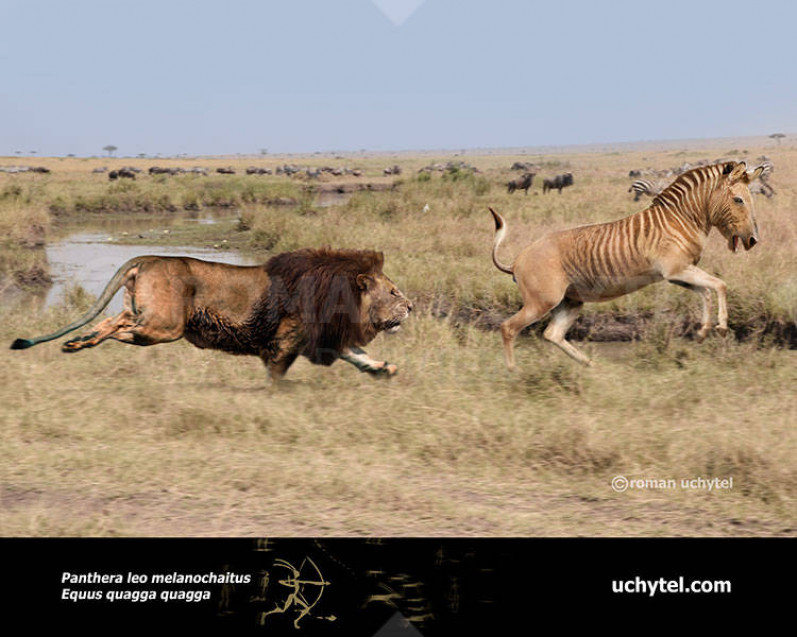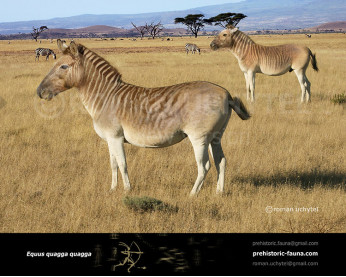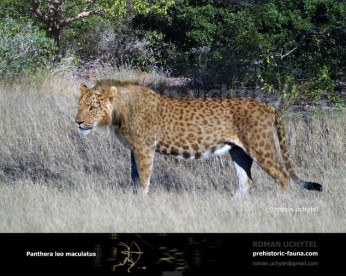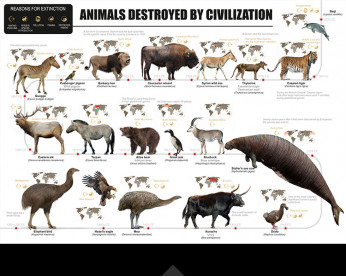Cape lion
2027520275Cape lion (Panthera leo melanochaita (Smith, 1842))
Order: Carnivora
Family: Felidae
Time period: late Pleistocene - modern days (South Africa, extirpated in the mid-19th century)
Size: 2.3 - 3 m in length, 90-120 cm in height, 170-280 kg of weight.
The Cape lion was a population of lions in South Africa's Natal and Cape Provinces that was extirpated in the mid-19th century. The type specimen originated at the Cape of Good Hope and was described as very large with black-edged ears and a black mane extending beyond the shoulders and under the belly.
American zoologist Edmund Heller described the Cape lion's skull as longer than those of equatorial lions, by at least 25 mm on average, despite being comparatively narrow. He considered the Cape lion to have been 'distinctly' bigger than other lions in Africa. Lions approaching 272 kg were shot south of the Vaal River. 19th century authors claimed that the Cape lion was bigger than the Asiatic lion.
Traditionally, the Cape lion was considered a distinct subspecies of lion, Panthera leo melanochaita. However, phylogeographic analysis has shown that lion populations in Southern and East Africa are closely related. In 2017, the subspecies Panthera leo melanochaita was recircumscribed to include all lion populations in Southern and East Africa. Genetic analysis published in 2023 suggests that Cape lions were not particularly distinctive from other Southern African lion populations.
Cape lion (Panthera leo melanochaita (Smith, 1842))
Order: Carnivora
Family: Felidae
Time period: late Pleistocene - modern days (South Africa, extirpated in the mid-19th century)
Size: 2.3 - 3 m in length, 90-120 cm in height, 170-280 kg of weight.
The Cape lion was a population of lions in South Africa's Natal and Cape Provinces that was extirpated in the mid-19th century. The type specimen originated at the Cape of Good Hope and was described as very large with black-edged ears and a black mane extending beyond the shoulders and under the belly.
American zoologist Edmund Heller described the Cape lion's skull as longer than those of equatorial lions, by at least 25 mm on average, despite being comparatively narrow. He considered the Cape lion to have been 'distinctly' bigger than other lions in Africa. Lions approaching 272 kg were shot south of the Vaal River. 19th century authors claimed that the Cape lion was bigger than the Asiatic lion.
Traditionally, the Cape lion was considered a distinct subspecies of lion, Panthera leo melanochaita. However, phylogeographic analysis has shown that lion populations in Southern and East Africa are closely related. In 2017, the subspecies Panthera leo melanochaita was recircumscribed to include all lion populations in Southern and East Africa. Genetic analysis published in 2023 suggests that Cape lions were not particularly distinctive from other Southern African lion populations.


-346x277.jpg)
-346x277.jpg)

-346x277.jpg)




